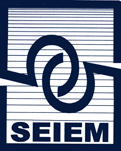Submissions
Submission Preparation Checklist
As part of the submission process, authors are required to check off their submission's compliance with all of the following items, and submissions may be returned to authors that do not adhere to these guidelines.- The paper has not been published previously, nor is it forthcoming or submitted to another journal.
- The subject, focus and scope of the manuscript (experimental or theoretical study) is in line with research in Mathematics Education.
- “Manuscript requirements” and “preparing a manuscript” sections have been reviewed and applied.
- An anonymous and a non-anonymous version are submitted. The anonymous version complies with the requirements for a blind review, so that it is not possible to identify the submitting authors and their institutions. The non-anonymous version includes all authors in their final order and their citations and references without anonymisation.
- The anonymous and non-anonymous version must not exceed 48000 characters including blank spaces, references, figures, tables and appendices, and this limit will be maintained when applying the requested modifications.
- The manuscript contains a title (maximum 15 words), abstract (maximum 150 words) and 5 keywords, two of which must be from the ERIC thesaurus (Education Resources Information Center). The title, abstract and keywords in English (or alternatively in Spanish) will be requested if accepted, as well as an extended abstract in English (or alternatively in Spanish) between 350-500 words.
- The references are completed and aligned with the journal requirements.
- The paper submitted to the journal is original in each and every part and correctly cites all sources used. The article has not been published before or is not under consideration for publication anywhere else. Furthermore, its publication has been approved by all co-authors.
Privacy Statement
The names and e-mail addresses introduced in the journal will be only used according to the aims expressed herein and will not be made available to any other purpose or person.








